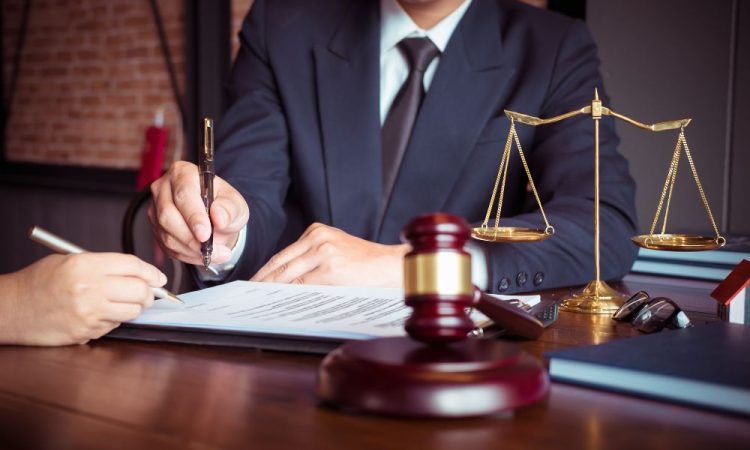
Municipal liability in New City isn’t static, 2025 is bringing sharper rules, tighter timelines, and higher evidentiary expectations for anyone pursuing a claim against a town, city, county, or public authority. Whether it’s a pothole that caused a crash, a broken sidewalk outside a public building, or a dangerous condition in a municipal park, the path to recovery is different than a typical injury case. A New City Municipal Liability Lawyer will focus on the deadlines and proof rules that are unique to government-related claims, because missing one small step can sink an otherwise strong case. This guide explains where these cases arise, how they’re proved, and what’s changing now.
Types of municipal liability cases in New City in 2025
Municipal liability covers a wide range of situations where a public entity’s negligence contributes to injury. In New City and across Rockland County, many claims in 2025 fall into familiar buckets, but the facts, and defenses, keep evolving.
Common categories
- Roadway and traffic control: defective roadways, unreasonably dangerous intersections, missing or obscured signs, faulty signals, negligent snow/ice removal, and poor drainage that leads to hydroplaning or black ice.
- Sidewalks and public walkways: uneven flags, loose grates, raised edges from tree roots, and unlit stairwells at public buildings.
- Parks, schools, and recreational sites: unsafe playground equipment, poorly maintained fields, inadequate supervision during municipal programs.
- Municipal vehicles and transit: collisions involving buses, sanitation trucks, highway department vehicles, or emergency services where ordinary negligence applies.
- Public building hazards: wet floors without warnings, broken handrails, ceiling leaks, or falling debris.
- Police/fire protection and 911 response: limited circumstances where a “special duty” is established.
2025 trends to watch
- Micromobility (e-bikes and scooters) interacting with municipal infrastructure.
- Severe-weather events exposing drainage, tree maintenance, and slope stabilization issues.
- Increased reliance on digital notice systems (311/911) that can affect notice-of-claim arguments.
A New City municipal liability lawyer will start by classifying the case type, because each category triggers different defenses, like prior written notice, design immunity, or the special-duty rule.
Claims involving unsafe roads and public property hazards
Road and property hazard cases sound straightforward, until the municipal defenses surface. Two distinctions matter most: design versus maintenance, and notice.
Design vs. maintenance
- Design/planning decisions (like lane layouts or traffic-calming choices) can be shielded by qualified immunity if the municipality studied the issue and made a reasonable plan. Challenging design often requires traffic engineering experts and proof that no reasonable study supported the decision, or that conditions materially changed and the plan wasn’t updated.
- Maintenance/operation (like filling potholes, replacing a missing sign, or clearing ice) generally carries a duty of reasonable care without the same immunity.
Prior written notice laws
Many New York municipalities can’t be sued for street/sidewalk defects unless they had prior written notice of the exact hazard, typically recorded in a “notice log.” There are narrow exceptions, such as:
- The municipality created the defect through affirmative negligence (not just failed to fix it), or
- A “special use” of the area benefited the municipality.
Practical examples
- A driver blows a tire and crashes on a deep pothole that residents reported via 311. If those reports qualify as written notice under local law, the case gains traction.
- A pedestrian trips on a raised sidewalk slab outside a town office. If maintenance crews previously documented it, or if recent curb work caused the defect, the claim may proceed even if no public complaint was filed.
Public property hazard claims succeed when counsel quickly secures notice logs, work orders, and video before they disappear.
Legal deadlines unique to government-related cases
Government-related claims move on a faster clock than ordinary personal injury cases. Missing a single deadline can be fatal.
Core timelines in New York municipal cases
- Notice of Claim: Generally must be served on the correct public entity within 90 days of the incident for tort claims (e.g., negligence). The Notice of Claim is not a lawsuit, it’s a prerequisite that alerts the entity and preserves rights.
- 50-h hearing: After a Notice of Claim, many municipal defendants may demand a pre-suit examination (a “50-h” hearing) and medical authorizations. Claimants must appear: otherwise, the case can be dismissed.
- Time to sue: In many municipal tort cases, the statute of limitations is 1 year and 90 days from the incident (or from the appointment of an estate representative in some wrongful death matters). Wrongful death claims generally have a 2-year limit but still require a Notice of Claim within 90 days of the death.
Variations by entity
- State of New York (Court of Claims): Different rules apply, often requiring a Notice of Intention or a claim filing within 90 days for negligence claims, with the action proceeding in the Court of Claims.
- Transit and public authorities: Some authorities follow the 90-day notice rule and the 1 year and 90 days statute: others have shorter notice periods (e.g., 60 days) or special service requirements. The entity-specific statute controls.
Late notice relief
Courts can allow a late Notice of Claim, but only on motion and within the applicable limitations period. Judges weigh whether the public entity had “actual knowledge” of the essential facts within 90 days (accident reports, 311/911 records, video, or internal memos can help), whether the delay prejudiced the defense, and whether the claimant had a reasonable excuse. This is never guaranteed, speed still matters.
Bottom line: a New City Municipal Liability Lawyer will triage deadlines on day one, identify the correct entity (town, county, school district, transit authority, or state), and serve the right office in the right way.
Evidence requirements in proving municipal negligence
Winning a municipal case is often an evidence race. Early preservation and targeted public-records requests make the difference.
What to preserve immediately
- Scene photographs and measurements (defect height/width/depth: sightlines at an intersection: lighting conditions at night).
- Witness information and any 311/911 reference numbers.
- Vehicle telematics, dashcam footage, and nearby surveillance video.
- Weather data (for snow/ice and flooding claims) from reputable sources, paired with plow/salt logs.
Public records and FOIL requests
- Prior written notice logs and complaint records for the precise location.
- Work orders, inspection schedules, and maintenance logs.
- Traffic studies, warrants for signals/stop signs, and roadway design plans.
- Contracts with outside maintenance or construction contractors (and their compliance records).
Expert involvement
- Civil/traffic engineers to analyze design reasonableness and maintenance standards.
- Human factors experts on visibility, conspicuity, and pedestrian expectation.
- Accident reconstructionists to model speeds, sight distances, and stopping times.
Procedural steps that create evidence
- The 50-h hearing locks in the claimant’s testimony: preparation matters.
- Early spoliation letters help preserve video and logs with short retention cycles.
Municipal defendants often argue “no notice,” “no defect,” or “immune design.” The right records, and the right experts, counter each one.
Recent legal updates shaping municipal liability disputes
While no single 2025 statute has upended New York municipal liability, several currents are shaping outcomes:
- Actual-knowledge focus on late notices: Courts continue applying the New York Court of Appeals’ framework that prioritizes whether the municipality had actual knowledge of essential facts within 90 days. Accident reports, internal emails, and 311/911 data can tip the balance.
- Prior written notice remains formidable: Appellate decisions reiterate that exceptions are narrow. Showing affirmative creation of a defect requires more than speculation.
- Digital evidence acceptance: Judges are increasingly receptive to authenticated surveillance, dashcam, and smartphone video to establish timing, notice, and defect characteristics.
- Remote 50-h logistics: Many municipalities still conduct 50-h hearings by video, which helps scheduling but requires careful prep to avoid technical hiccups and credibility issues.
Practically, attorneys who move fast on digital proof and entity-specific notice rules are winning the close calls.
How attorneys navigate complex municipal defense strategies
Municipal defendants don’t just deny, they deploy well-honed defenses. Experienced counsel anticipates and answers them methodically.
Playbook for common defenses
- Prior written notice: Counsel hunts for qualifying complaints, contractor emails, or inspection notes, and, if none, develops the “affirmative negligence” or “special use” exceptions.
- Design immunity/qualified immunity: They probe whether a real study supported the plan, whether conditions materially changed, or whether the plan was ignored in practice (which converts the issue from design to negligent maintenance).
- Trivial defect and open-and-obvious: Attorneys contextualize the hazard with lighting, crowding, distraction, and usage patterns so the defect isn’t minimized.
- Storm-in-progress: Weather records and timing of plow/salt logs are matched minute-by-minute to show unreasonable delays after a storm abated.
- Special duty (police/EMS cases): They work to establish a specific promise, reliance, or custody/control that creates a duty beyond what’s owed to the general public.
Local experience matters
In Rockland County, knowing how a particular town logs complaints, which insurer adjusts its claims, and how quickly surveillance footage is overwritten can be decisive. Firms with municipal experience, such as Fellows Hymowitz Rice, are familiar with New City’s processes and the regional courts, which helps them move fast on notices, 50-h scheduling, and FOIL requests without wasted motion.




